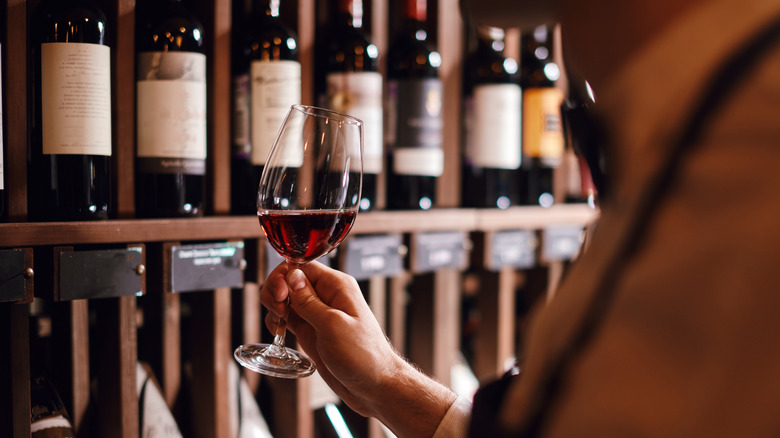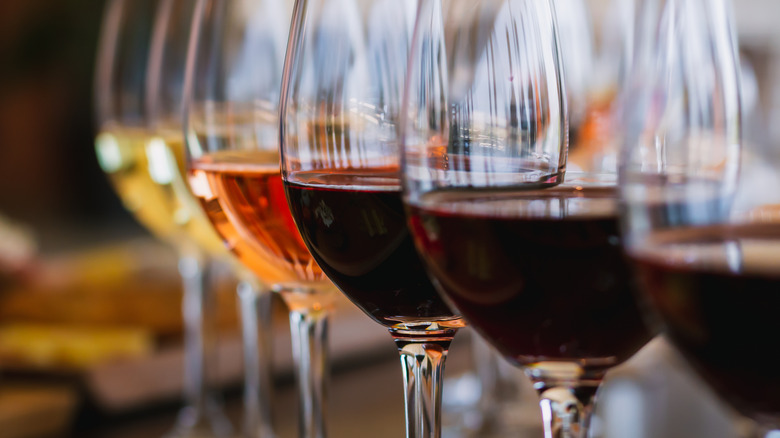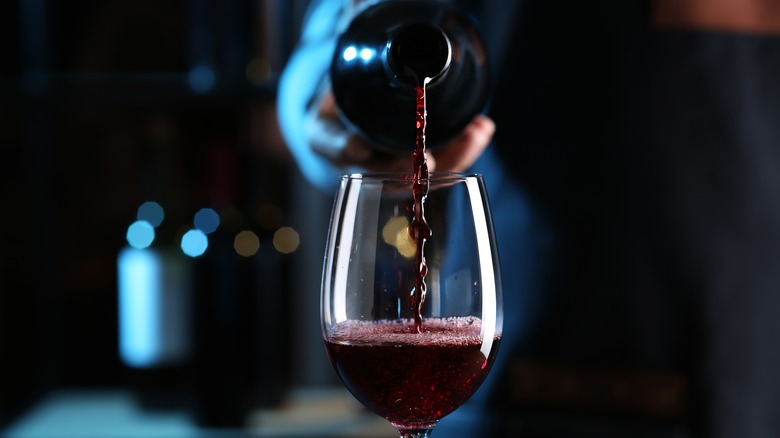Why The Location Can Be The Biggest Red Flag On A Wine Label
The world of wine is as varied and expansive as the places on the planet where wine grapes are grown. And given their ability to grow in what would otherwise be regarded as an innutritious, harsh terroir, wine can be produced practically anywhere. Due to variations in how a climate affects the way grapes grow, location can have a huge impact on the final product's flavor. For example, wine produced in more temperate climates like the Mediterranean will have a fuller, sweeter taste, while wines produced in colder regions have a more fruity flavor. You can learn a lot about a wine by simply looking at the location mentioned on its label.
A wine label provides a wealth of information about the beverage, and a gifted wine aficionado can give you a full description of a bottle with nothing more than a thorough inspection of the packaging. But while the location label on a wine can teach you a lot about the history and qualities of a certain vintage, it can also be a huge red flag that what you're drinking isn't the best option out there.
A vague location can mean a subpar wine
The location of a wine label tells you where the grapes come from, not necessarily where the wine was made. It can be as specific as an individual vineyard, or as broad as a state or territory. In a video for Bon Appétit, sommelier André Hueston Mack explains that the more vague the location is on a wine label, the less likely it is to be a high-quality wine. This is because a broad label like "France" or "California" may mean that the wine is made from a mix of grapes from different areas of that location, rather than from the same small source.
Because the taste of wine changes depending on where the grapes are grown, this means that the grapes that are blended together to produce a wine with a vague location label may taste dissimilar. This isn't necessarily a bad thing; a wine that's attributed to a broad location can still be good. While it is still subjected to tastings and the like during production, a homogeneity of grapes may result in something less harmonious than a single variety from a shared plot. For example, a bottle of Pinot Grigio that's simply labeled "Italy" may taste less cohesive than a bottle that credits a specific vineyard. This is also why wines with a vague location are often less expensive.
Other labels to look out for
In the video, André Hueston Mack also suggests checking the label for a producer name. Wine producers are responsible for distributing the wine to sellers both domestically and internationally. People who like to sample new wines should look out for these producer names, and make a record of any that they enjoy. If there's a producer whose palette you align with, you can keep an eye out for new bottles from other companies they've worked with. You should also note if a wine has an import label; you may find that you have a penchant for wines made in a certain country.
While you're browsing, you may notice bottles that specify they're vegan. Some wines are made with animal products, like egg whites and gelatin. These products are sometimes used by some winemakers to help process the wine. Wines with a "vegan" or "vegetarian" label have not used animal products for this process. Wine labels are your window into the flavors of a wine, and learning how to decipher them will help you find your next favorite bottle. Feel free to try any wine that looks interesting to you, but be warned that a bottle with a vague location may be disappointing.


